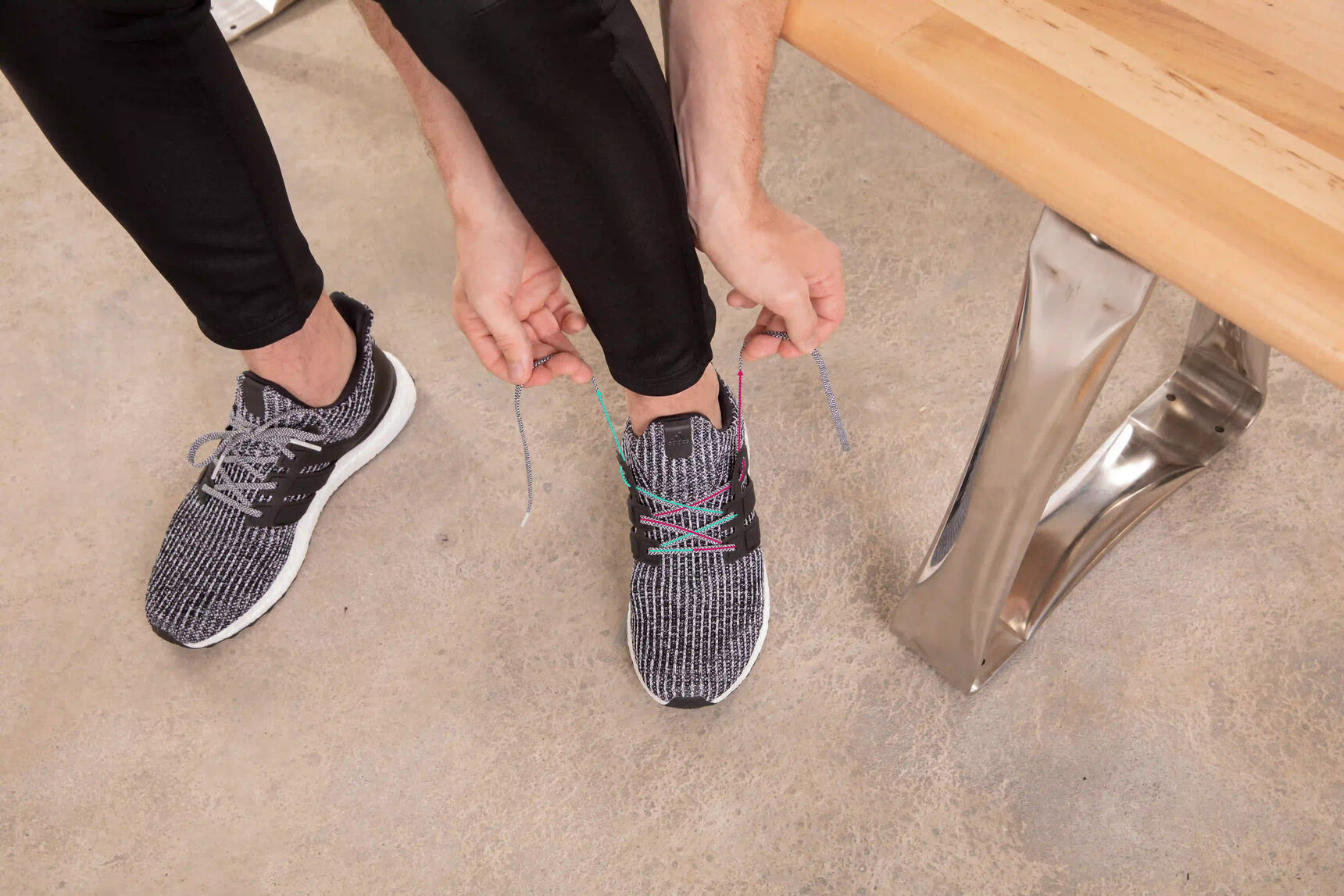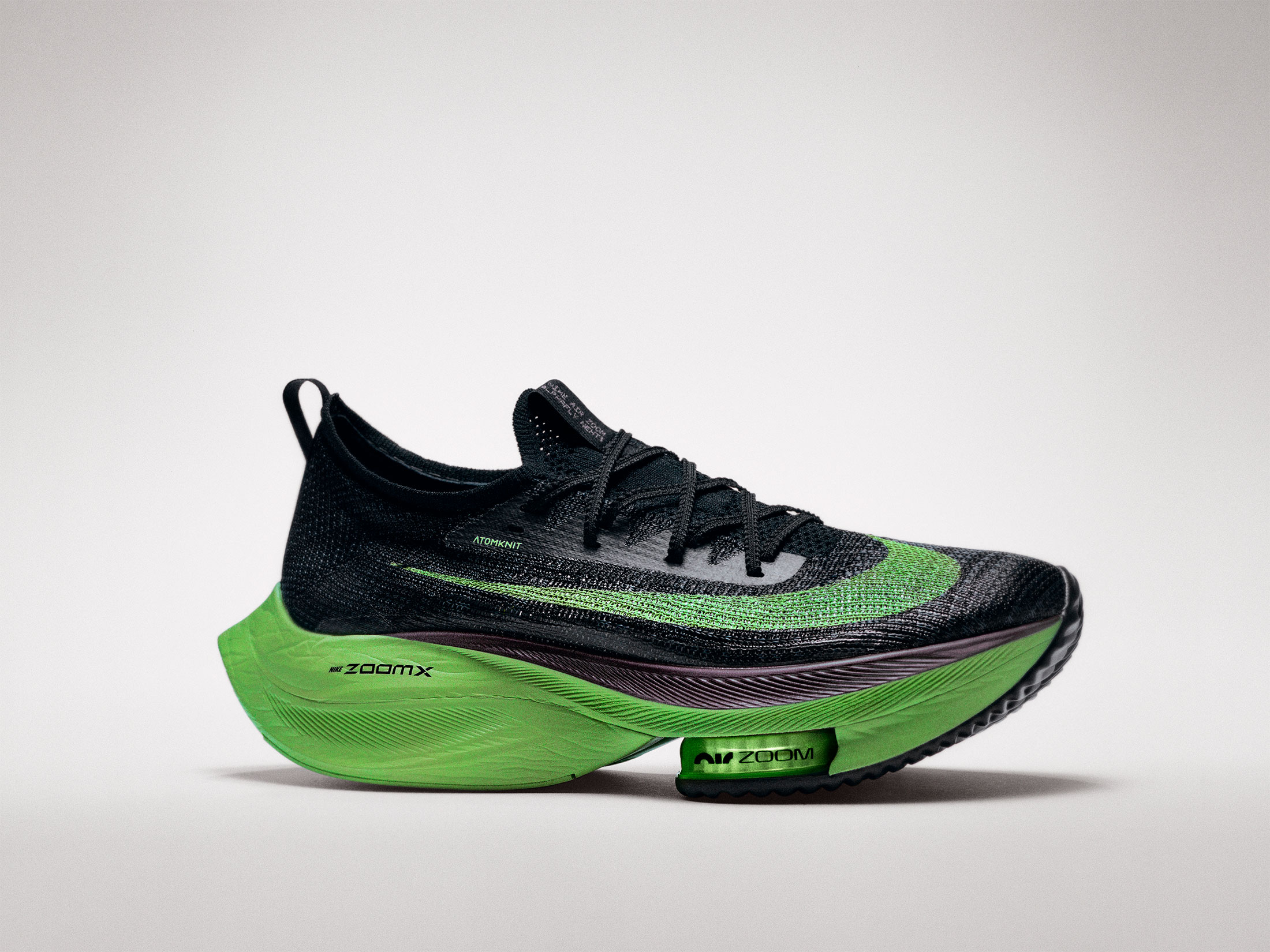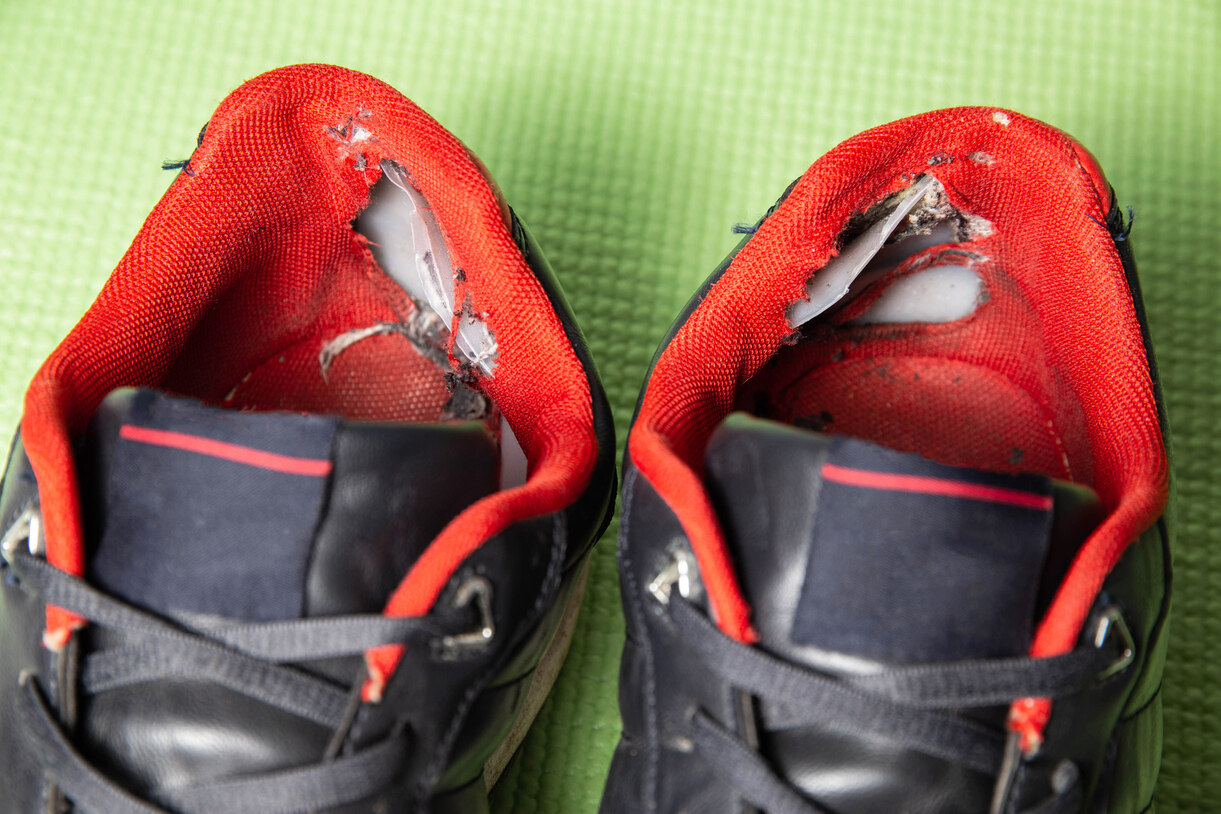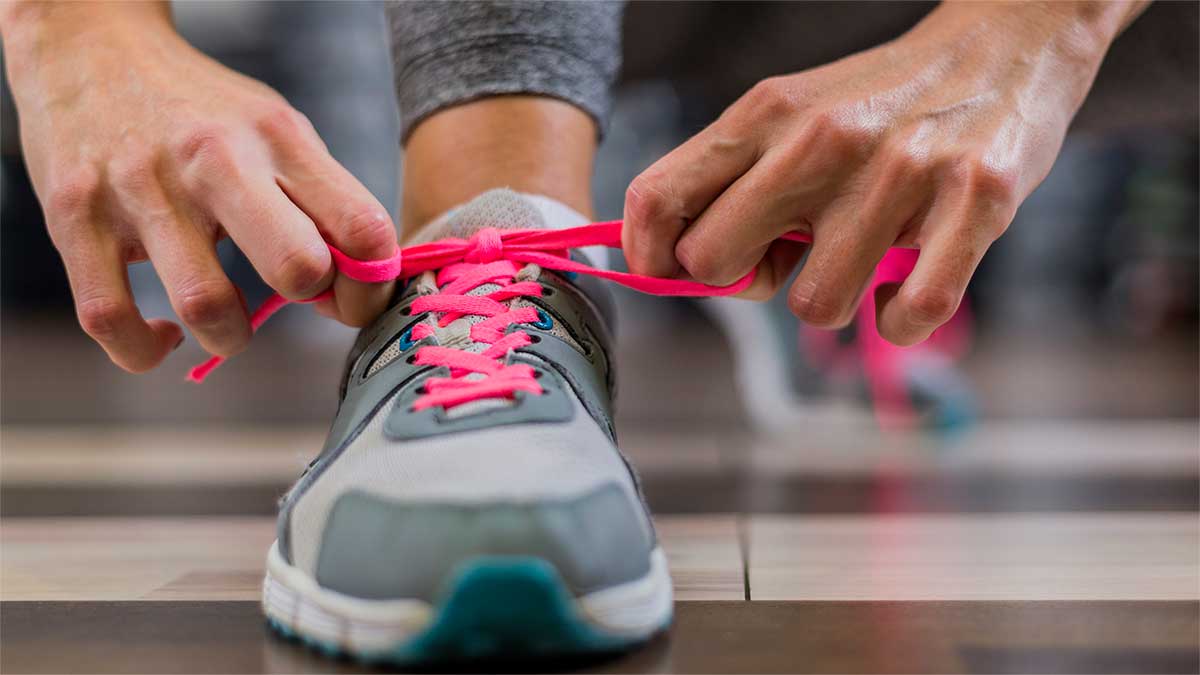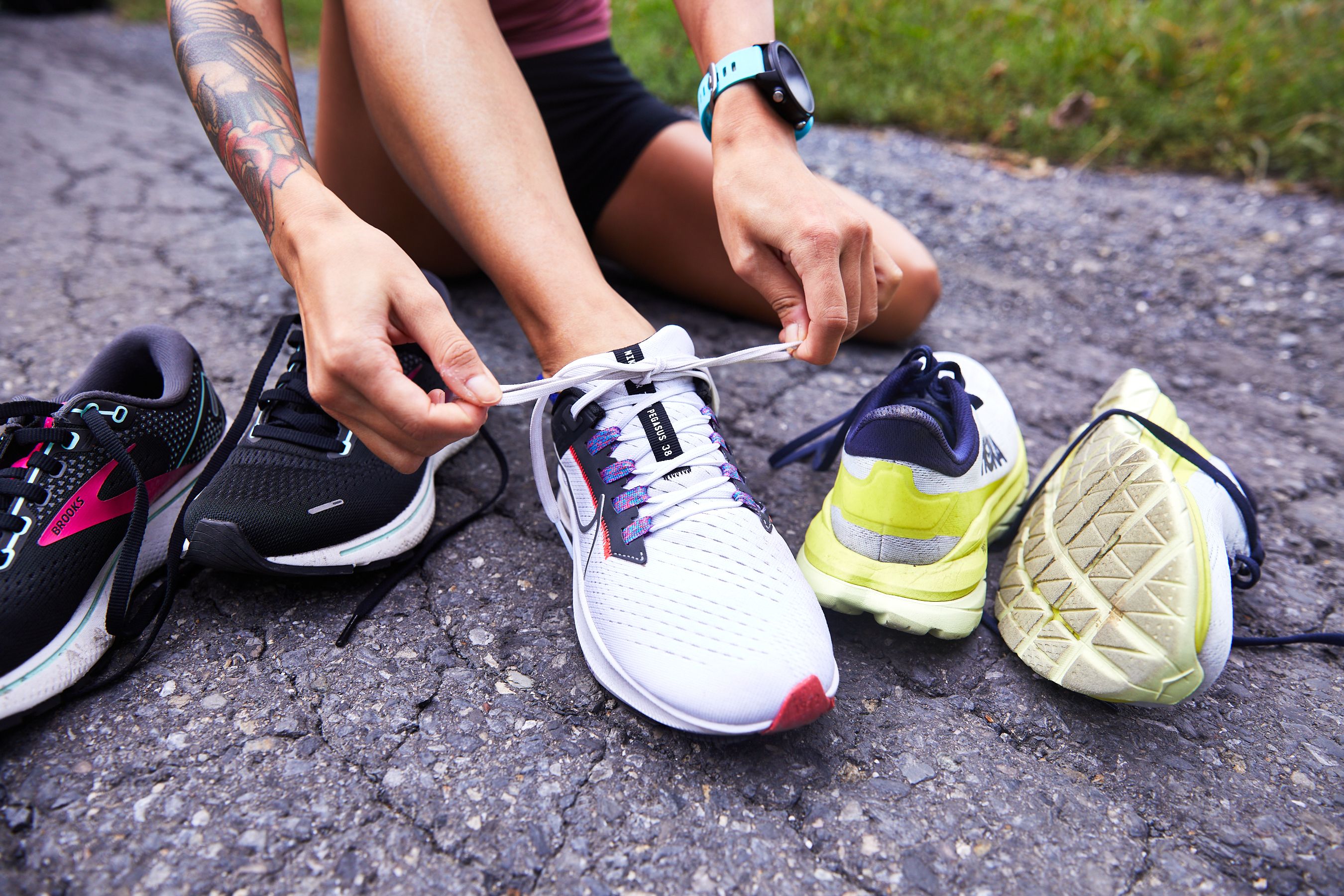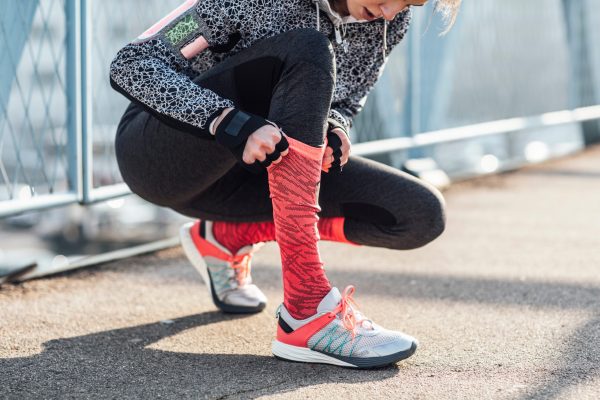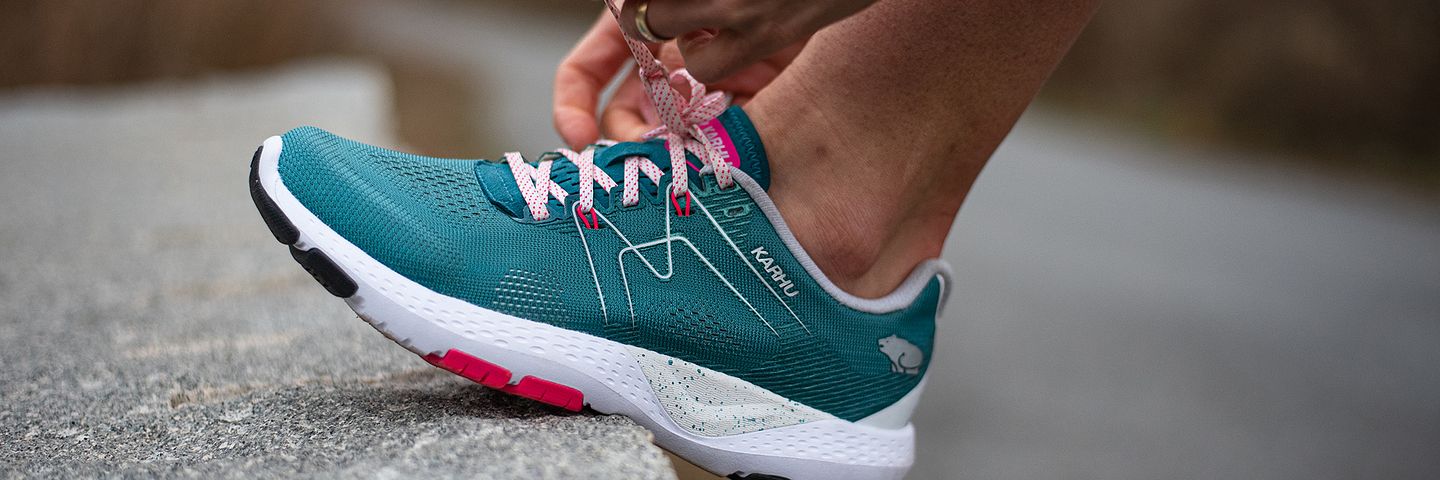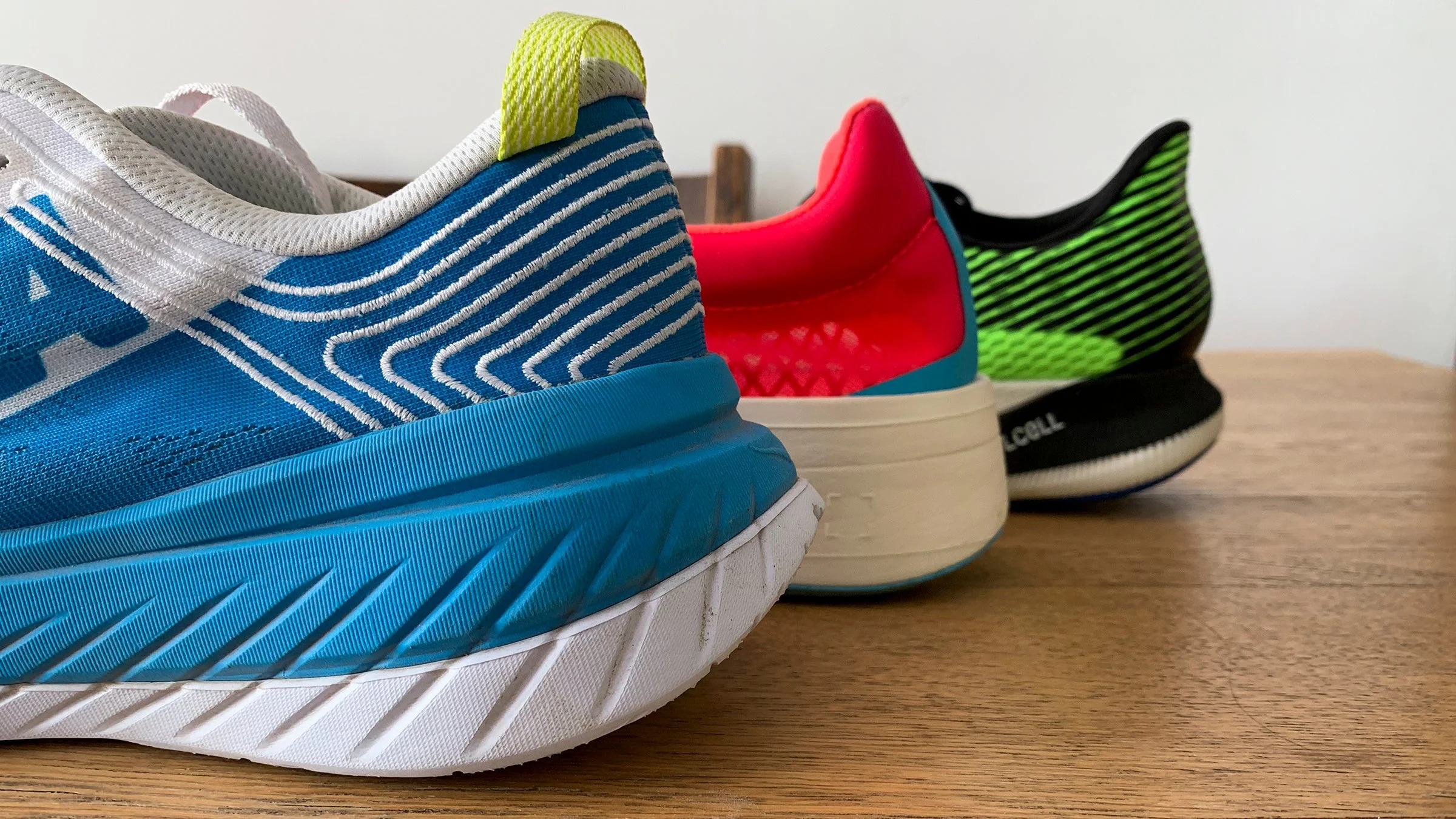

Featured
Why Are Running Shoes So Thick
Modified: January 2, 2024
Discover why featured running shoes are so thick and how they provide the perfect balance of cushioning and support for your feet.
Introduction
Running shoes have come a long way since their inception. What was once a simple piece of footwear designed to protect our feet has evolved into a highly specialized and technologically advanced product. One noticeable aspect of modern running shoes is their thickness. But why are running shoes so thick? What purpose does this extra padding serve? In this article, we will explore the reasons behind the thickness of running shoes and delve into the history and evolution of their design.
Running, as a form of physical activity, puts a significant amount of stress on our body, particularly our feet. The repetitive impact generated with each stride can lead to foot, ankle, and joint injuries if not properly cushioned and supported. The main purpose of running shoes is to provide the necessary protection and shock absorption to minimize these risks and enhance overall performance.
Over the years, running shoes have undergone substantial changes in design and construction to meet the demands of runners. In the early days, running shoes were minimalistic, with little cushioning or support. However, as our understanding of biomechanics and the impact forces associated with running improved, manufacturers started incorporating more padding and advanced materials to enhance comfort and reduce the risk of injuries.
Today, running shoes boast a thick sole, often made of materials such as ethylene-vinyl acetate (EVA) foam or polyurethane. These materials are lightweight yet provide excellent shock absorption and cushioning. The additional thickness in the midsole absorbs and disperses the impact forces generated during running, protecting our feet and joints from excessive stress.
In addition to cushioning, running shoes also feature other elements that contribute to their thickness. These include the outsole, which provides traction and durability, and in some cases, additional stability features such as medial posts or arch supports. The upper part of the shoe is typically made of breathable and supportive materials, adding some bulk to the overall design.
History of Running Shoes
The history of running shoes dates back thousands of years. The earliest evidence of footwear designed specifically for running can be traced back to ancient civilizations such as the Egyptians and Greeks. These early running shoes were nothing like the modern designs we are familiar with today. They were simple and made from basic materials such as animal hides or woven grass.
It wasn’t until the late 19th century that running shoes started to develop as a specialized athletic footwear. During this time, rubber soles were introduced, providing better traction and durability. However, it wasn’t until the 1960s and 1970s that running shoes experienced significant advancements.
In the 1960s, the shoe company Adidas released the “Sprint” model, which featured a unique design with spikes on the sole for enhanced grip on the track. This was a game-changer for athletes, as it allowed them to run faster and perform better. Around the same time, Nike, a relatively new player in the sports footwear market, introduced the “Waffle Trainer,” which featured a rubber sole with protruding squares that improved traction on various surfaces.
As running gained popularity as a recreational activity in the 1970s, the demand for comfortable and supportive running shoes increased. This led to further innovations in shoe technology. Nike, in particular, revolutionized the running shoe industry when it introduced the Nike Air in the late 1970s. The Nike Air featured a cushioning system that utilized pressurized air pockets within the midsole, providing exceptional shock absorption and comfort.
Throughout the 1980s and 1990s, running shoe designs continued to evolve. More brands entered the market, each with their own unique technologies and features. As research on biomechanics and foot mechanics advanced, shoe companies began incorporating technologies such as gel cushioning, stability control systems, and motion control technologies into their designs.
Today, the running shoe market is highly competitive, with numerous brands constantly pushing the boundaries of design and technology. Lightweight materials, improved cushioning technologies, and advanced biomechanical studies have all contributed to the development of running shoes that are not only highly comfortable but also offer superior performance and injury prevention.
It is fascinating to see how running shoes have evolved from simple and rudimentary designs to the highly engineered and specialized footwear we have today. As our understanding of human physiology and biomechanics continues to expand, it is likely that running shoe designs will continue to evolve to meet the needs of runners worldwide.
Evolution of Running Shoe Designs
The evolution of running shoe designs has been a testament to our growing understanding of human biomechanics and the need for optimal performance and injury prevention. From simple and minimalistic designs to the complex and technologically advanced shoes of today, running shoes have constantly adapted to meet the demands of runners.
Early running shoes were basic and had a sole made of simple materials such as leather or woven grass. They provided minimal protection and cushioning, mostly focusing on providing traction and durability. However, as our knowledge and research on running mechanics progressed, shoe designers began incorporating more advanced features into their designs.
In the 1960s and 1970s, running shoe companies like Adidas and Nike introduced spikes and rubber soles with protruding squares to improve traction on the track and various surfaces. These early innovations laid the groundwork for future developments in running shoe technology.
In the 1980s and 1990s, the focus began to shift towards cushioning and stability. Brands like Nike and Asics introduced gel cushioning systems, which provided enhanced shock absorption and comfort during running. The midsoles of running shoes became thicker and more padded, allowing for better impact protection and reducing the risk of injuries.
As running shoe technologies advanced further, manufacturers started to incorporate motion control and stability features to address pronation and other gait-related issues. These features aimed to provide support and guidance to runners who needed extra stability for their feet and ankles.
Interestingly, the trend in recent years has shifted towards minimalistic and lightweight designs. This evolution was driven by the belief that running with less shoe intervention can promote a more natural running style and improve performance. Minimalist running shoes typically have a thinner sole and less cushioning, allowing for more ground feel and a closer connection to the running surface.
However, it’s important to note that while minimalistic shoes gained popularity, they are not suitable for everyone. Different runners have different biomechanics, and some may benefit from more cushioning and support. Therefore, the running shoe market now offers a wide range of options to cater to individual needs and preferences.
Overall, the evolution of running shoe designs has been shaped by a combination of scientific research, technological advancements, and the unique needs of runners. From basic protection to advanced cushioning and stability features, running shoes have come a long way in providing comfort, support, and improved performance. As our understanding of human biomechanics continues to grow, we can expect further innovations and advancements in running shoe design in the future.
Impact Protection and Cushioning in Running Shoes
One of the primary reasons for the thickness of modern running shoes is their focus on providing impact protection and cushioning. The repetitive force generated with each stride during running can have a significant impact on our feet and joints. Therefore, running shoe manufacturers invest heavily in cushioning technologies to minimize the risk of injuries and enhance overall comfort.
Running shoes rely on various cushioning materials and technologies to absorb and dissipate the impact forces generated during each foot strike. The midsole of the shoe is the key component responsible for providing cushioning and support. It is typically made of materials such as ethylene-vinyl acetate (EVA) foam or polyurethane, which are known for their excellent shock absorption properties.
These cushioning materials are designed to compress upon impact and then quickly regain their shape, effectively dissipating the force and reducing the stress on our feet and joints. The thickness of the midsole plays a crucial role in determining the level of cushioning provided by the shoe. A thicker midsole can offer more cushioning and better shock absorption, making it a popular choice for runners seeking maximum comfort during long-distance runs.
In addition to the midsole, other components of the shoe, such as the sock liner or insole, also contribute to impact protection and cushioning. These layers provide additional comfort and support by conforming to the shape of the foot and absorbing some of the shock from each foot strike.
It’s important to note that the amount of cushioning needed in a running shoe can vary depending on individual preferences and running style. Some runners may prefer a softer and more plush cushioning, while others may opt for a firmer and more responsive feel. It’s always recommended to try on different shoes and consult with professionals to find the right amount of cushioning that suits your specific needs.
While cushioning is essential for impact protection, it’s worth mentioning that excessive cushioning may not always be beneficial. Running shoes with excessive thickness can sometimes lead to instability and hinder natural foot movement during the running gait cycle. Therefore, finding the right balance between cushioning and stability is crucial when selecting running shoes.
Ultimately, the focus on impact protection and cushioning in running shoes is to minimize the risk of injuries and enhance overall comfort for runners. The thickness of the shoe’s midsole and the choice of cushioning materials are fundamental factors in providing the necessary shock absorption and cushioning required to support the foot and reduce the impact forces generated while running.
Factors Contributing to Thickness in Running Shoes
The thickness of running shoes is influenced by various factors, including the need for impact protection, stability, and durability. While the primary purpose of a running shoe is to provide cushioning and support, several other factors contribute to its overall thickness. Let’s explore some of the key factors influencing the thickness of modern running shoes.
1. Cushioning and Impact Absorption: Running shoes are designed to absorb and dissipate the impact forces generated during running. The thickness of the midsole plays a significant role in determining the level of cushioning and shock absorption provided by the shoe. Thicker midsoles, often made from materials such as EVA foam or polyurethane, offer more cushioning and can better absorb the impact, reducing the stress on the feet and joints.
2. Stability and Support: Some runners require additional stability and support to correct pronation or other gait-related issues. Running shoes with stability features, such as supportive structures in the midsole or a higher heel counter, may contribute to the overall thickness of the shoe. These features aim to guide the foot’s movement and provide a more stable and efficient running experience.
3. Durability: Running shoes need to withstand the rigors of regular use and the impact of running on various surfaces. To enhance durability, manufacturers often incorporate additional layers or reinforcements in the outsole or upper of the shoe. These reinforcements add thickness and strength to the shoe, ensuring it can withstand the wear and tear of running over longer periods.
4. Protective Features: Running shoes may also include protective features to safeguard the foot from potential hazards encountered during outdoor activities. Protective elements like rock plates or toe guards provide additional thickness to the shoe, ensuring that the foot is shielded from sharp objects or rough terrain.
5. Marketing and Aesthetics: The thickness of running shoes can also be influenced by marketing and aesthetic choices. Some runners are drawn to shoes that have a more substantial or chunkier appearance, often associated with certain brands or trends. Manufacturers may design and market shoes with thicker profiles to appeal to these preferences.
6. Cultural Influences: Cultural factors can also contribute to the thickness of running shoes. In some regions or communities, there may be a preference for thicker-soled shoes due to cultural norms or fashion trends. Manufacturers may take these preferences into account when designing and producing running shoes for specific markets.
It’s crucial to note that while thickness in running shoes can provide benefits like cushioning and support, it may not be suitable for all runners. Every individual has unique biomechanics and preferences, and what works for one person may not work for another. It’s essential to find a shoe that provides the right combination of properties and fits your specific needs, rather than solely focusing on thickness.
Overall, the thickness of running shoes is influenced by various factors, including cushioning, stability, durability, marketing, aesthetics, and cultural influences. Manufacturers strive to strike a balance between these factors to create shoes that offer the right combination of support, protection, and comfort for runners of all levels.
Role of Technology in Running Shoe Thickness
Technology has played a crucial role in the development of running shoes and has contributed significantly to their overall thickness. Advancements in materials, manufacturing techniques, and biomechanical research have allowed manufacturers to create running shoes with enhanced performance and improved comfort. Here, we’ll explore the role of technology in influencing the thickness of modern running shoes.
1. Material Innovation: The development of new materials has been instrumental in shaping the thickness of running shoes. Lightweight yet durable materials like ethylene-vinyl acetate (EVA) foam, polyurethane, and various proprietary foam formulations provide excellent cushioning and shock absorption without adding unnecessary weight or bulk. These materials can be engineered to have specific properties, allowing for precise control over the thickness and density of the midsole.
2. Cushioning Technologies: Technology has facilitated the creation of advanced cushioning technologies that contribute to the thickness of running shoes. Brands like Nike, Adidas, and Brooks have introduced various cushioning systems, such as Nike Air, Adidas Boost, and Brooks DNA, which provide targeted cushioning and improved energy return. These technologies utilize innovative materials and design principles to maximize comfort and reduce the impact forces experienced during running.
3. Biomechanical Research: In recent years, advancements in biomechanical research have provided invaluable insights into the mechanics of running. This has allowed manufacturers to design shoes that cater to specific foot mechanics and running styles. By conducting thorough studies on how forces are distributed during running, shoe designers can strategically place cushioning and stability features in areas that require additional support, thus influencing the thickness of the shoe in those specific regions.
4. 3D Printing: 3D printing technology has revolutionized the manufacturing process of running shoes. It enables precise and customizable designs, allowing for the creation of complex midsole structures with varying thicknesses and densities. This technology has opened up new possibilities for optimizing the cushioning and support provided by running shoes, while also reducing waste and increasing production efficiency.
5. Finite Element Analysis (FEA): Numerous shoe manufacturers utilize FEA, a computer simulation technique, to analyze and optimize the performance of running shoe designs. By simulating the interaction between the shoe and the foot during various phases of the running gait, FEA helps identify areas where additional cushioning or support is required. This aids in determining the appropriate thickness and distribution of materials within the shoe to maximize comfort and performance.
6. Pressure Mapping: Pressure mapping technology allows researchers and shoe designers to understand the distribution of forces underneath the foot while running. This data is crucial in determining areas of high pressure and potential discomfort. By analyzing pressure data, shoe designers can make informed decisions about the placement and thickness of cushioning materials, ensuring optimal shock absorption and comfort.
These technological advancements have not only influenced the thickness of running shoes but have also improved overall performance, comfort, and injury prevention. However, it’s important to note that while technology has made significant contributions to running shoe thickness, it is essential for individuals to find a shoe that suits their specific needs and preferences, as every runner’s biomechanics and comfort requirements can vary.
Common Misconceptions about Thick Running Shoes
There are several misconceptions surrounding the thickness of running shoes. These misconceptions can lead to confusion when choosing the right pair of shoes. Let’s address some of the most common misconceptions about thick running shoes and shed light on the truth behind them.
1. Thick shoes are automatically better. One common misconception is that thicker running shoes automatically provide better cushioning and support. While it’s true that added thickness can offer enhanced shock absorption, the ideal amount of cushioning depends on individual preferences, biomechanics, and running style. Some runners may find thinner, more minimalist shoes to be more suitable for their comfort and performance needs.
2. Thick shoes cause instability. Another misconception is that thick-soled running shoes can make the runner feel unstable or disconnected from the ground. However, advancements in shoe technology have allowed manufacturers to create thicker shoes with built-in stability features, such as medial posts or arch supports. These features provide the necessary stability while still providing adequate cushioning.
3. All thick-soled shoes are heavy. Thick-soled shoes are often associated with added weight, but this is not always the case. Modern shoe materials, such as lightweight foams and advanced technologies like air pockets or carbon fiber plates, can provide excellent cushioning without significantly increasing the overall weight of the shoe. Many brands prioritize weight reduction while still maintaining adequate cushioning in their thicker-soled models.
4. Thick shoes lead to slower running times. Some runners worry that thicker shoes can slow them down due to added weight or decreased flexibility. However, studies have shown that the impact of shoe thickness on running speed is minimal for most recreational runners. The comfort and support provided by thicker running shoes can actually contribute to better running efficiency and reduce the risk of fatigue-related injuries.
5. Thick shoes are the only option for maximum cushioning. While thicker-soled shoes are often associated with maximum cushioning, there are other factors to consider as well. Running shoe brands offer a wide range of models with varying levels of cushioning and support. It’s important to try different shoes and find the right balance between cushioning, stability, and personal comfort.
6. Thick shoes are necessary for all running surfaces. There is a misconception that thick-soled shoes are required for all running surfaces. In reality, the choice of shoe depends on the terrain, personal preference, and the individual runner’s needs. For example, on softer surfaces like trails, some runners may prefer thinner shoes to maintain a better feel for the ground, while thicker shoes may be preferred for harder surfaces like asphalt or concrete.
It’s essential to challenge these misconceptions and consider personal comfort, running style, and individual needs when selecting running shoes. What works for one runner may not work for another, and finding the right balance between cushioning, support, and thickness is crucial for optimal performance and injury prevention.
The Future of Running Shoe Design
The world of running shoe design is an ever-evolving landscape driven by advancements in technology, biomechanical research, and changing runner preferences. The future of running shoe design holds exciting possibilities that aim to further enhance performance, comfort, and injury prevention. Here are some important aspects that we can expect to shape the future of running shoe design.
1. Customization and Personalization: The future of running shoes lies in customization and personalization. With the help of emerging technologies like 3D printing and advanced scanning techniques, runners will have the opportunity to create shoes that perfectly match their individual biomechanics and preferences. Customized midsole thickness, cushioning density, and support systems will enhance overall comfort, reduce injury risk, and ensure the best possible performance for each runner.
2. Sustainable Materials and Production: Environmental sustainability is a growing concern across industries, and the running shoe industry is no exception. The future will see a shift towards more sustainable materials and production methods, such as using recycled and eco-friendly materials in shoe construction. Manufacturing processes will focus on reducing waste and incorporating greener practices. Thinner yet high-performing materials will be utilized to create lightweight and sustainable running shoes without compromising on quality or durability.
3. Integrated Technology and Connectivity: The integration of technology into running shoes is already underway, and it will continue to grow in the future. We can expect to see more advanced features like embedded sensors, smart insoles, and connectivity options that allow runners to monitor and analyze their performance in real-time. These technologies will provide valuable insights into running mechanics, foot strike patterns, and enable personalized feedback to optimize training and prevent injuries.
4. Enhanced Energy Return: Energy return is an essential aspect of running shoe performance. In the future, we will see innovations in midsole materials and designs that maximize energy return with each foot strike. Advances in foam technology, carbon fiber plates, and additional propulsion systems will enable runners to experience greater energy efficiency, leading to improved running economy and potentially faster race times.
5. Lightweight and Minimalist Options: While cushioning and support will remain important for many runners, lightweight and minimalist options will continue to have a place in the future of running shoe design. As our understanding of natural running mechanics improves, manufacturers will develop shoes with thinner and more flexible outsoles that allow for a closer connection to the ground. These shoes will prioritize natural foot movement while still providing adequate protection and comfort.
6. Collaboration and Innovation: The future of running shoe design will involve collaboration between shoe manufacturers, researchers, and runners themselves. By working together, designers can gather valuable insights from runners’ experiences and address specific needs and preferences. This collaboration will drive innovation, pushing the boundaries of traditional shoe design and opening up new possibilities for enhanced performance and comfort.
The future of running shoe design is an exciting and dynamic space. With ongoing technological advancements, sustainability initiatives, and a deeper understanding of biomechanics, we can expect running shoes to become even better tailored to individual runners’ needs and offer enhanced performance, comfort, and injury prevention. As the industry continues to evolve, runners can look forward to an exciting array of options that allow them to reach their full potential.
Conclusion
Running shoes have come a long way in terms of design, technology, and functionality. The thickness of running shoes serves a vital purpose in providing impact protection, cushioning, stability, and support to runners. Over time, advancements in materials, manufacturing techniques, and biomechanical research have influenced the thickness and overall design of running shoes.
Through history, we have witnessed the evolution of running shoes from simple and minimalistic designs to technologically advanced footwear engineered for optimal performance. The development of cushioning materials, stability features, and improved manufacturing processes have contributed to the thickness of modern running shoes.
It’s important to note that while thickness is a significant aspect, it’s not the only factor to consider when choosing running shoes. Personal preferences, biomechanics, running style, and the specific needs of individual runners all play a role in finding the right shoe. Customization and personalization, sustainable materials and production practices, integrated technology, enhanced energy return, lightweight options, and collaboration between various stakeholders will shape the future of running shoe design.
By understanding the role of thickness in running shoes, debunking common misconceptions, and staying updated on the latest advancements and trends in shoe design, runners can make informed choices and find shoes that provide the necessary comfort, support, and performance enhancement.
Ultimately, regardless of the thickness, the most important thing is to find running shoes that suit your individual needs and preferences. Choose shoes that are comfortable, provide adequate cushioning and support for your running style, and allow you to perform at your best while minimizing the risk of injuries.
As technology continues to advance and our understanding of human biomechanics deepens, we can expect running shoe designs to evolve further, offering even more innovative solutions that enhance performance and personalize the running experience for every individual. So lace up your shoes, hit the road, and enjoy the exhilarating journey that running brings!

